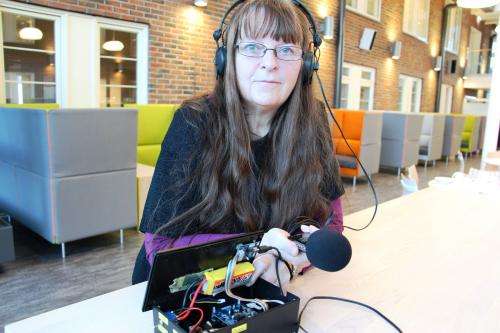Developing affordable hearing aids for third-world children

Norwegian researchers are developing a simple and cheap hearing aid that can be adapted to compensate for a child's hearing loss without the need for specialists. The aim is to help more people in the third world.
SINTEF would like to make it easier to adapt hearing aids for children, so that more children with hearing loss in poor countries can receive the support they need, and thereby also the opportunity to learn to read and write.
At the moment, the only way to receive support for hearing loss is to go through a doctor, specialist and audiologist. This is a complicated and expensive process, and discourages many poor people from seeking assistance.
"For many families living in rural villages in countries like Kenya, even a journey to the capital city in order to see an ear doctor is a huge financial burden that can cost more than the hearing aid itself. This is what we want to tackle", says project initiator and SINTEF researcher Tone Berg.
The idea that she and her colleagues, working closely with the company Auristronic AS, have now made a reality is to integrate the hearing test, adjustment process and the hearing aid itself into a single headset. The aim is to support school-age children in their local communities. And it must be cheap.
"We envisage training local teachers to adjust the equipment. This should be easy using smartphones. If we manage to get the cost of production down to what we believe we can, which is around NOK 300 per headset, this is a realistic solution", says Berg.
Demonstration model ready
There is already a demonstration model at the researchers' office that contains all the necessary electronics. The essential technology actually fits onto a 5 x 5 mm microchip. Researchers at SINTEF have been working on advanced solutions for problems like hearing protection for many years, so have acquired a great deal of knowledge. However, what they do need help with is the design:
"We want the equipment to be stylish and perhaps even colourful, so that young people will want to wear it", explains Tone Berg. She adds that SINTEF is talking to Inventas, a design office with its origins in the Norwegian University of Science and Technology's (NTNU) industrial design programme.
Adjustment using games
Hearing aids are currently adjusted using a series of sounds. The user indicates when he or she can hear various sounds and this measures their hearing loss. This is known as an audiogram.
"We are evaluating the possibility of using new approaches for measuring hearing loss. Our aim is to make it fun – to hold the attention of young people. Measuring hearing loss requires concentration, so we felt that it would be useful to connect it to something that is not perceived as boring", emphasises Berg.
Experience from South Africa
Tone Øderud at SINTEF has worked on hearing aids for disabled people in Namibia and Zimbabwe for many years: She has confidence in the idea – and experience in building up local expertise by training people with a hearing impairment to help others with the same problem.
We have spent many years training local resource personnel to repair and adapt aids for disabled people in Zimbabwe and Namibia. Wheelchairs, crutches and other mobility aids are some of the items we have been producing and adapting at local workshops in these two countries.
"We hope that our experience of training local people and the network that we have built up through our activities will now help us to make the hearing aid project a reality", says Tone Øderud.



















